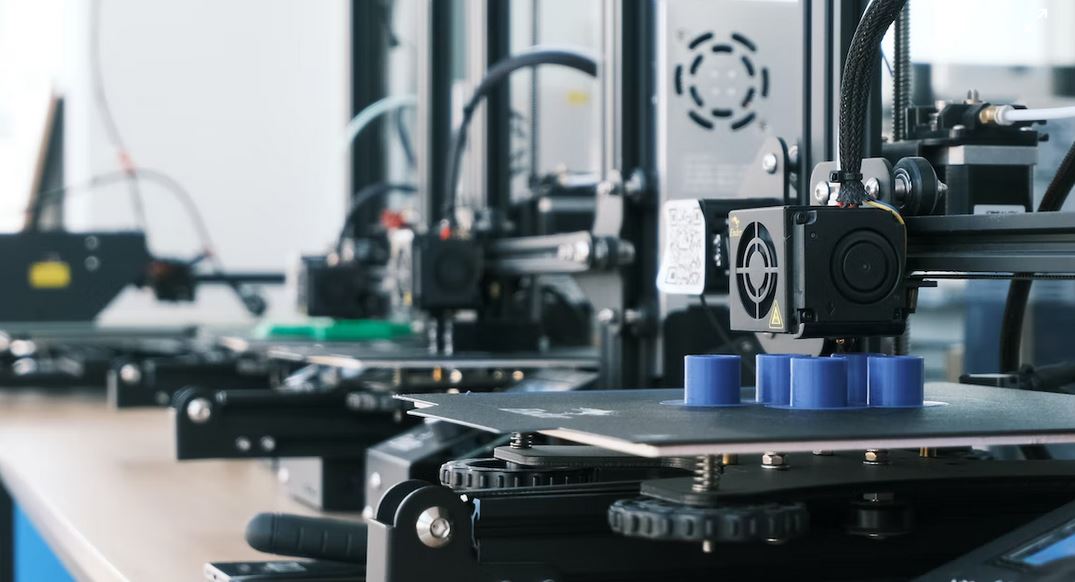Additive Manufacturing (AM) is the process of creating an object by building it one layer at a time. It is a sustainable production method that eliminates the need for excess material and unnecessary waste. It can be used to fabricate complex shapes without tooling. The cost of manufacturing with AM is often not cheaper than conventional processing, particularly if the product is designed for mass production. AM processes include VAT photopolymerization, material jetting, material extrusion, binder jetting, powder bed fusion, sheet lamination, and directed energy deposition. These AM processes are briefly explained as follows:
- VAT photopolymerization: liquid photopolymer in a vat is cured by light, and the material form is liquid.
- Material jetting: droplets of material are selectively deposited, and the material form is liquid.
- Material extrusion: material is dispensed through a nozzle in layers, and the material forms are filament, pellets, and paste.
- Binder jetting: a liquid bonding agent is selectively deposited, and the material form is powder.
- Powder bed fusion: thermal energy fuses regions of a powder bed, and the material form is powder.
- Sheet lamination: sheets of material are bonded to form an object, and the material form is sheets.
- Directed energy deposition: focused thermal energy fuses materials as deposited, and the material forms are powder and wire.
The medical applications of AM are classified as follows:
- Medical models: Medical models are based on patient anatomy, and they can be used for preoperative as well as postoperative planning. They are widely used in the craniomaxillofacial area, also for limbs, the spine, and the pelvis. Powder bed fusion, material extrusion, and binder jetting are three AM processes that are usually utilized for medical models.
- Implants: Implants are manufactured directly or indirectly by AM to replace damaged or missing tissue. AM is a favorable choice for manufacturing personalized implants. Most of the implants are constructed from metals using the powder bed fusion process. In some cases, polymers and ceramics are utilized to fabricate the implants.
- Tools, instruments, and parts for medical devices: Tools, instruments, and parts for medical devices improve clinical operations. Patient-specific dimensions and shapes might be used. Surgical instruments as well as orthodontic appliances can be considered in this classification. The VAT photopolymerization process is often employed to manufacture tools, instruments, and parts for medical devices.
- Medical aids, supportive guides, splints, and prostheses: Parts created with AM are external to the body and can be customized. Long-term and postoperative supports, motion guides, fixators, external prostheses, prosthesis sockets, and personalized splints can be taken as examples of this category.
- Biomanufacturing: A combination of AM and tissue engineering is considered Biomanufacturing which mostly uses polymers, ceramics, and composites. Porous structures are also utilized that are favorable to attracting cells and cell growth.
Reference:
[1] Salmi, Mika. “Additive manufacturing processes in medical applications.” Materials 14.1 (2021): 191.

This article was written by Mahdieh Mosayebias part of an ongoing series of scientific communications written and curated by BioTrib’s Early Stage Researchers.
Mahdieh is researching the Design of Self Lubricating Prothesis at ETH Zurich, Switzerland.

